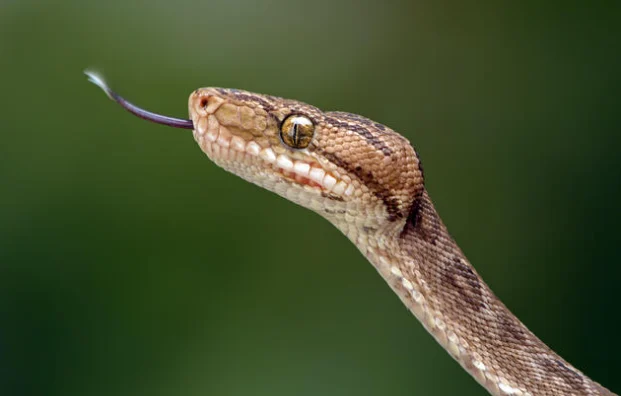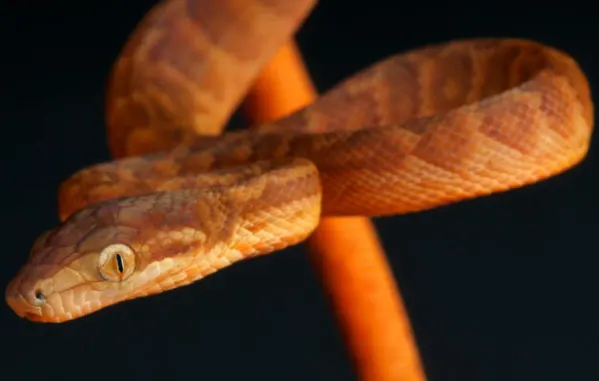Boas are among the most captivating snakes in the world, known for their powerful constriction method and their primitive characteristics. They are a diverse group, with 49 species spread across 12 genera. Whether you’re fascinated by their hunting methods, intrigued by their evolutionary history, or simply curious about their role in the animal kingdom, boas offer a wealth of knowledge and wonder.

Table of Contents
What Makes Boas Unique?
Boas are considered primitive snakes, retaining vestigial legs called spurs, a trait that sets them apart from more evolved species. These spurs are a remnant of limbs that their ancestors once used, highlighting their ancient lineage.
Incredible Boa Facts
- Reproduction: Unlike pythons, boas are ovoviviparous, meaning they don’t lay eggs. Instead, the eggs develop inside the mother until the babies are born live.
- Heat-Sensing Pits: Some boas have heat-sensing pits between their scales, unlike most other snakes that have these pits on top of their heads.
- Non-Venomous Constrictors: Boas are non-venomous and use their powerful muscles to squeeze their prey to death before swallowing it whole.
Scientific Classification and Origins
The family Boidae encompasses all boas, making any member of this family a boid. The name “boa” originates from the Latin word boa, meaning “large snake,” a term that has been used since the 1600s.
Boa Conservation Status
While many boa species are classified as “Least Concern,” some are listed as “Vulnerable” due to habitat destruction, poaching, and other human activities. Efforts are ongoing to protect these remarkable reptiles and their habitats.
Where Do Boas Live?
Boas are found in diverse locations, including Africa, Central America, and North America. Their habitat ranges from arid deserts to humid rainforests, influencing their behavior and lifestyle.
Physical Characteristics of Boas
Boas are typically large, muscular snakes with triangular-shaped heads and strong jaws. Their size can vary greatly, with some species reaching lengths of up to 23 feet. Their skin is covered in smooth, glossy scales, which in some species, appear iridescent under certain lighting.
Boa Behavior and Lifestyle
Boas are primarily solitary animals, coming together only during the mating season. They are mostly nocturnal and are known for their ambush hunting style, where they lie in wait for prey to come near before striking.
Q&A: Common Questions About Boas
Q: Are boas dangerous to humans? A: Boas can be dangerous, particularly the larger species like anacondas. However, smaller species, such as rosy boas, are generally harmless to humans.
Q: How do boas hunt? A: Most boas are ambush predators, lying in wait for their prey. Some species, however, actively hunt their prey, cruising through trees or across the ground.
Q: What do boas eat? A: Boas are carnivores, feeding on a variety of smaller animals. Their diet typically includes birds, mammals, reptiles, and even other snakes.
Q: Do boas lay eggs? A: No, boas are ovoviviparous, meaning they give birth to live young after the eggs have developed inside the mother.
Types of Boas
The boa family includes an impressive variety of species, each with unique traits and adaptations. Here are some notable types:
- Red-Tailed Boa (Boa constrictor): Known for its striking red tail, this species is popular among snake enthusiasts.
- Emerald Tree Boa (Corallus caninus): Recognized for its vibrant green color and arboreal lifestyle.
- Green Anaconda (Eunectes murinus): The largest of all boas, and indeed one of the largest snakes in the world.
- Madagascar Ground Boa (Acrantophis madagascariensis): A species native to Madagascar, known for its impressive size and terrestrial habits.

Boa Reproduction and Life Cycle
Boas reproduce through ovoviviparity, where the eggs develop inside the mother’s body. Depending on the species, the gestation period can last between 4 to 7 months. After birth, the neonates (baby boas) are independent and receive no further care from their mother.
Boa Predators and Threats
Juvenile boas are vulnerable to predators such as large birds, mammals, and other reptiles. As they grow, their size becomes a deterrent to many predators. However, human activities pose significant threats to boas, including habitat destruction and poaching for the pet trade.
Boas are a fascinating group of snakes with a rich evolutionary history and diverse behaviors. Their unique characteristics, such as vestigial legs and heat-sensing pits, make them a subject of great interest to scientists and snake enthusiasts alike. Despite the challenges they face, boas continue to thrive in various habitats around the world, embodying the resilience and adaptability of nature.
- Enchi Ball Python: A Unique and Stunning Morph of Python regius - March 27, 2025
- Emerald Tree Monitor: The Enigmatic Green Guardian of the Rainforest - March 26, 2025
- The Egyptian Cobra (Naja haje): A Fascinating Serpent - March 25, 2025
